Hindu temple tour in Ubud! Balinese architecture, Uluwatu kecek fire dance, Barong theater.
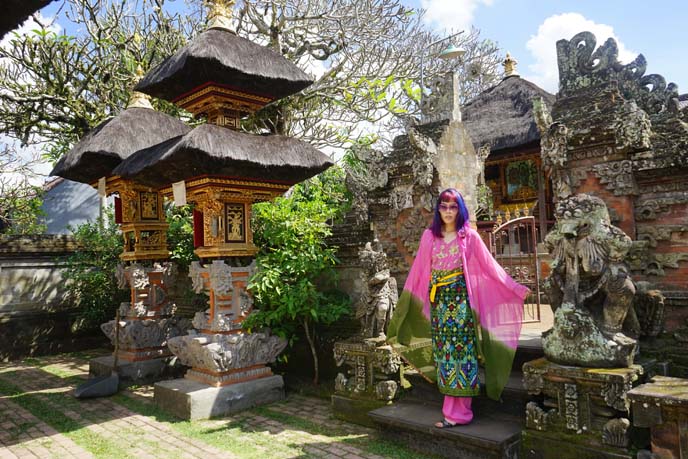
Bali, the Island of Gods! At last, I was able to come to this destination known for its warm, spiritual culture.
I had seen stunning photos of Hindu temples in Ubud…
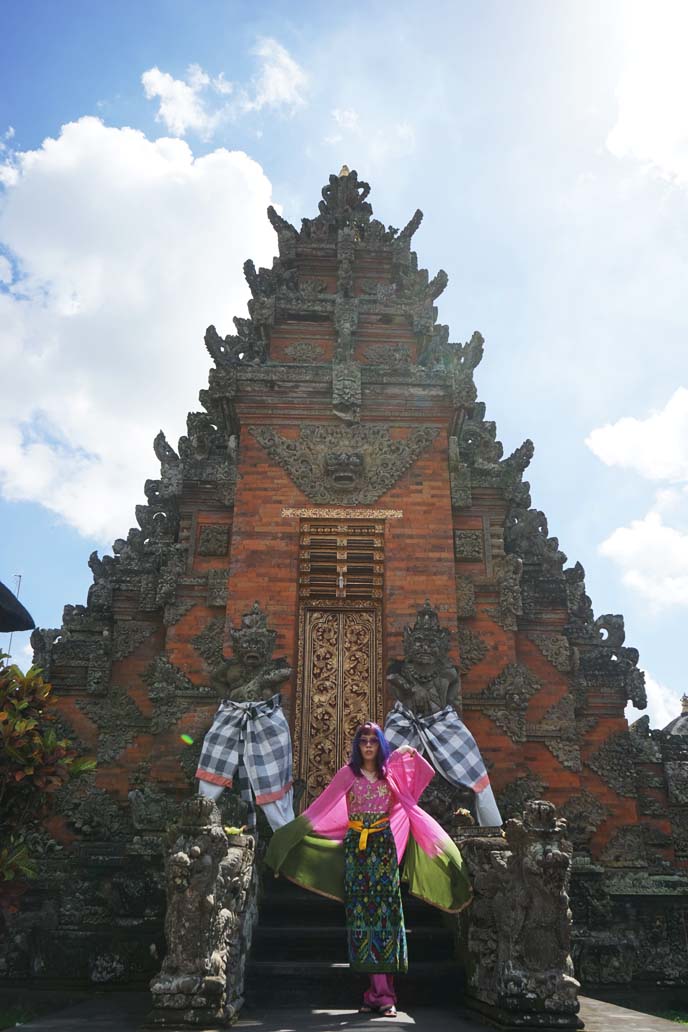
… but nothing prepared me for how impressive it feels to be there in person, surrounded by incense and flowers.

You’ll remember that I stayed at The Ritz-Carlton Bali, a five-star hotel that encourages guests to take in the culture of the island. They have a partnership with Destination Services, who offer private tours and immersive activities for travellers.
Destination Services was wonderful at listening to my goals for a day trip, and arranging a temple and culture journey around Ubud. We had a sweet local guide with us, and we learned so much about Bali living — from temple histories to marriage customs.

In addition to visiting sacred places in Bali, we watched two colorful performances — including a kecak fire dance, as the sun set over Uluwatu Temple. There’s video footage below, so read on.
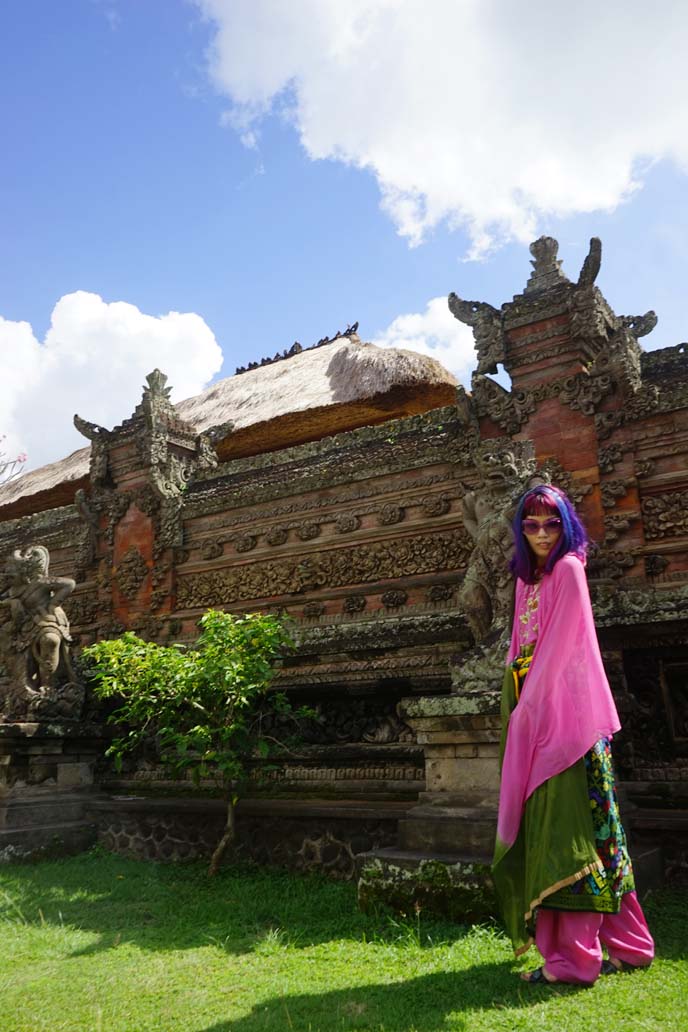
That morning, our Destination Services guide picked us up from The Ritz-Carlton Bali. The climate is especially humid around noon, and we were grateful we had a private, air-conditioned van to take us around.
The temples provide sarongs and scarves for guests to cover up bare limbs, as a sign of respect. I wore an Indian garment, which kept me cool yet covered.
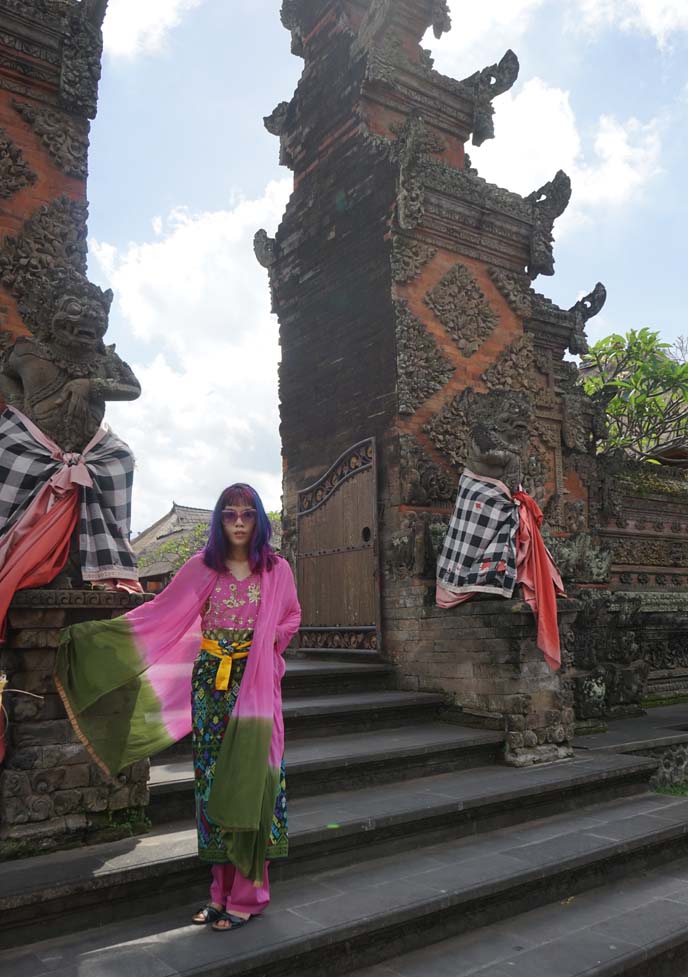
I love customized private tours since you get to go exactly where you want with a local expert, and can avoid tourist traps like gift shops. Our guide took us to Pura Desa Puseh Batuan, a lesser-known village temple. (Photos by my friends Cohica Travel, who blog and consult on sustainable traveling.)
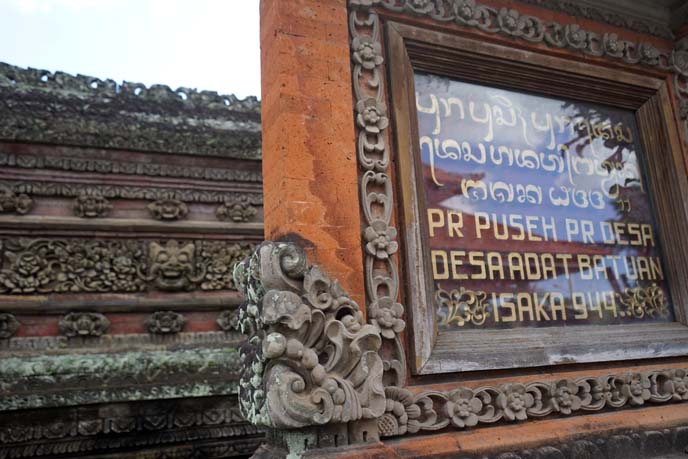
This pura (Hindu temple) is a thousand years old, and dedicated to the god Brahma.
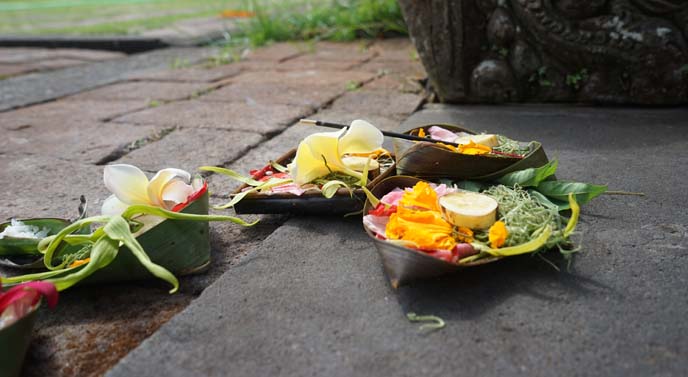
At the entrance, we saw these beautifully packaged ritual offerings. Devotees present these to the spirits three times a day, in a uniquely Balinese tradition.
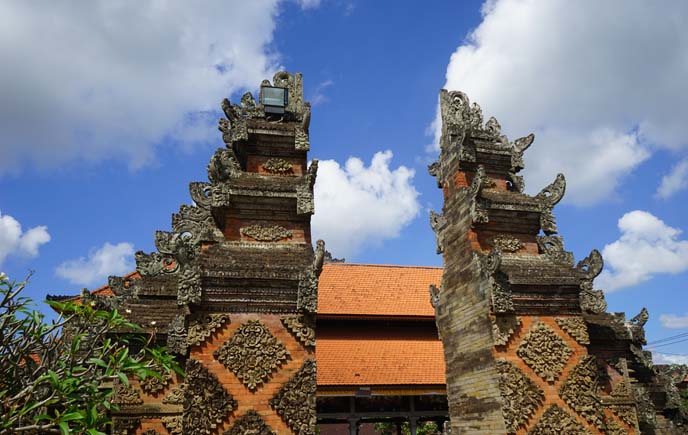
You feel a special energy as you walk through the “candi bentar,” or ornate split gate that is found in many of Bali’s temples.
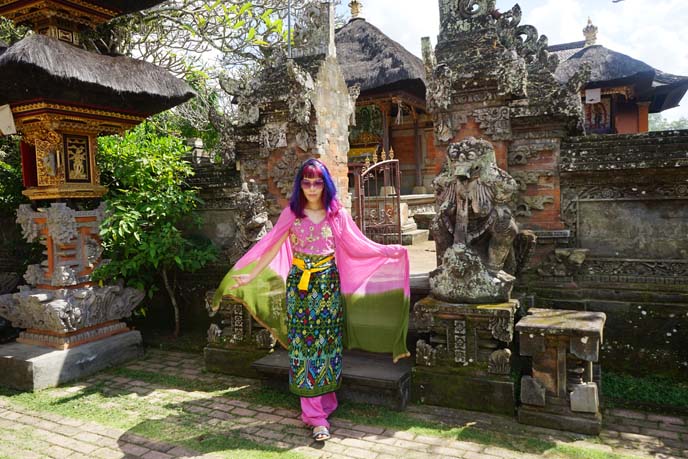
Balinese Hinduism is distinct from the Indian tradition. Here, the religion merges with folk rituals and mythological deities. Many temples also have Buddhist statues, as the Balinese look to the Buddha as a spiritual figure.
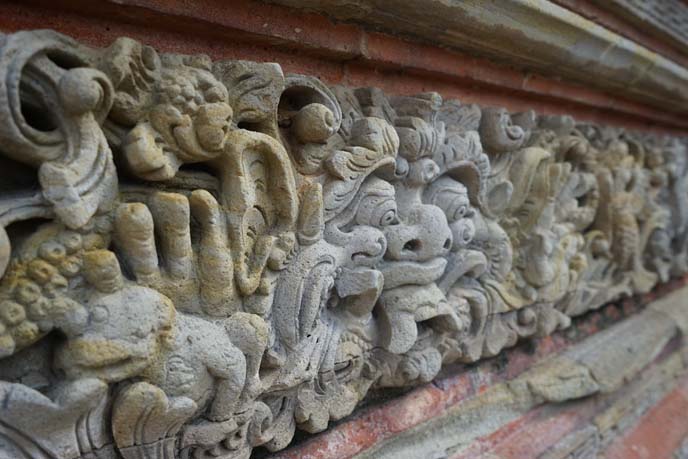
I was mesmerized by the sculpted stone designs. Bali’s craftsmen are known for their intricate techniques.
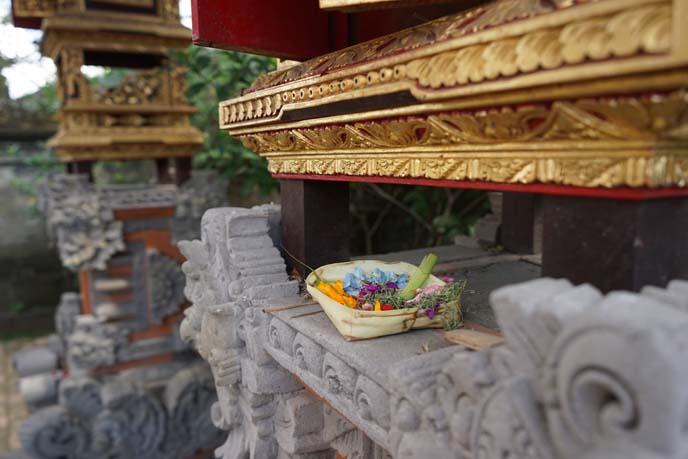
Bali is known as “the island of the thousand temples” because in addition to village temples, people set up their own “puras” at home. As we drove through Ubud, every third house seemed to have an adjoining courtyard for worship.
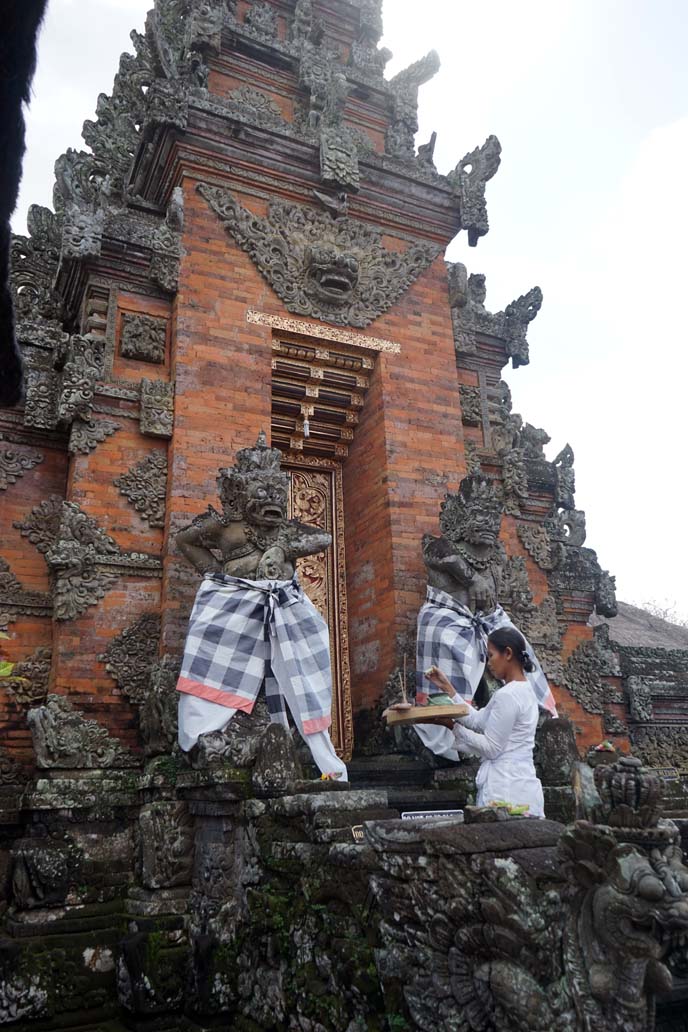
Balinese Hindus give a colorful packet of offerings three times a day, to thank the good spirits and appease the evil ones. This lady at Pura Desa Batuan holds a tray of fruit, flowers and incense.

We were glad to have our guide with us, to tell us personal stories of growing up in this spiritual place.
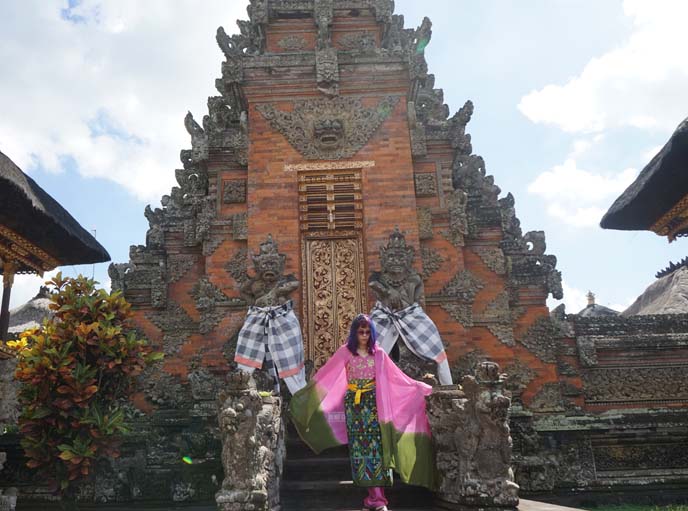
Most of Indonesia is Muslim, but Bali practices a distinct form of Hinduism.

Nature plays an important role in Balinese spirituality, and the temples are blossoming with trees and flowers.
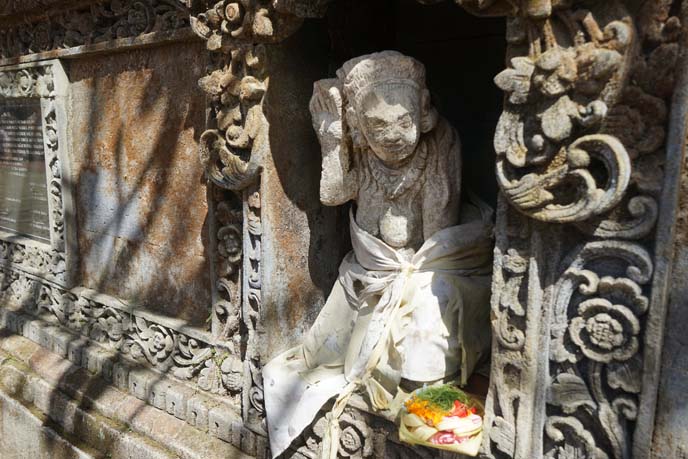
You can’t help but feel the love, when you see these devotional gifts everywhere.
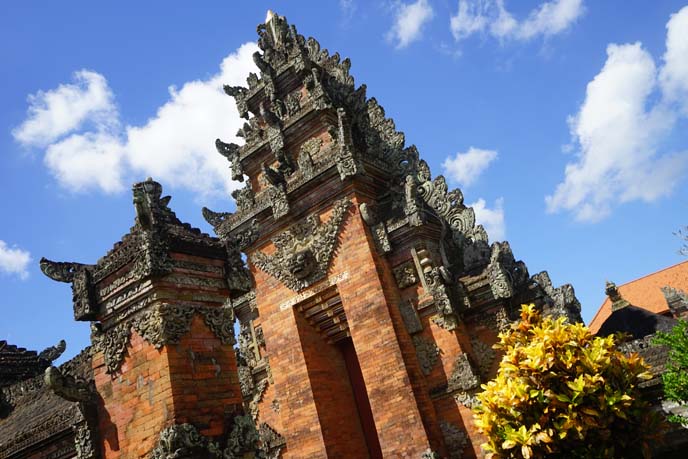
I was in awe of the intricate rooftop carvings.
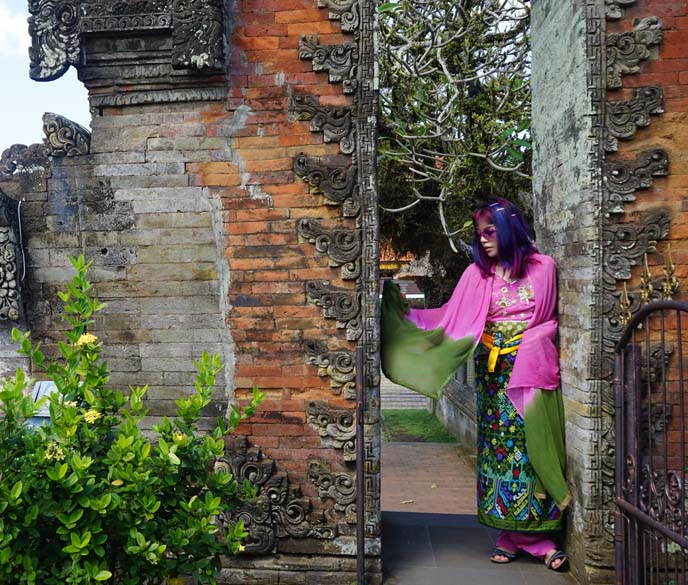
I had never seen architecture like this anywhere else. Courtyards, pavilions, bas reliefs, prayer areas.
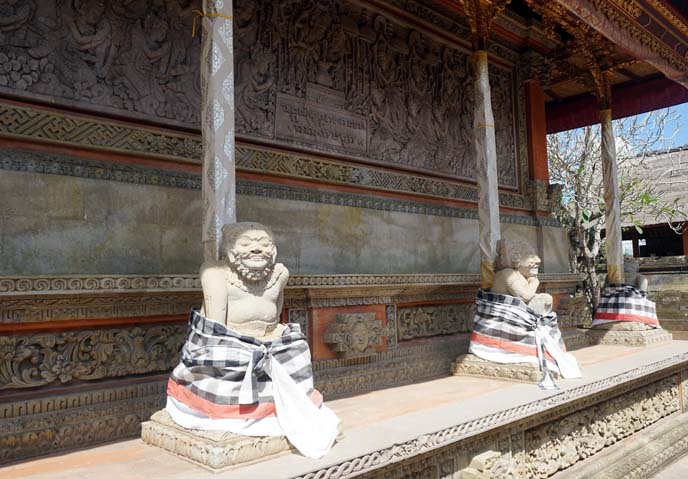
The design of traditional puras follows a “tri mandala” concept that creates balance.
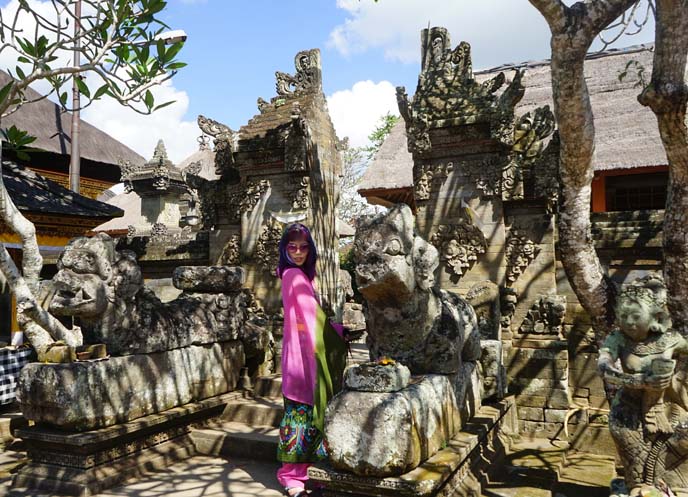
These guardian deity statues protect the gates.
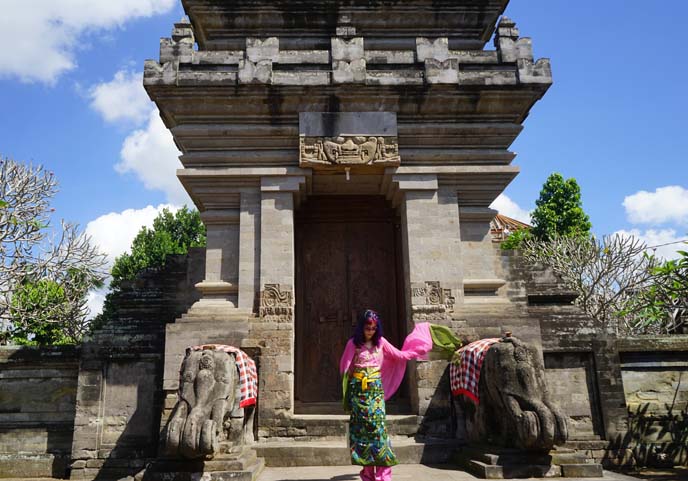
The elephant god, Ganesha, is one of the best loved in the Hindu pantheon. I also saw many representations of the garuda, or holy bird.
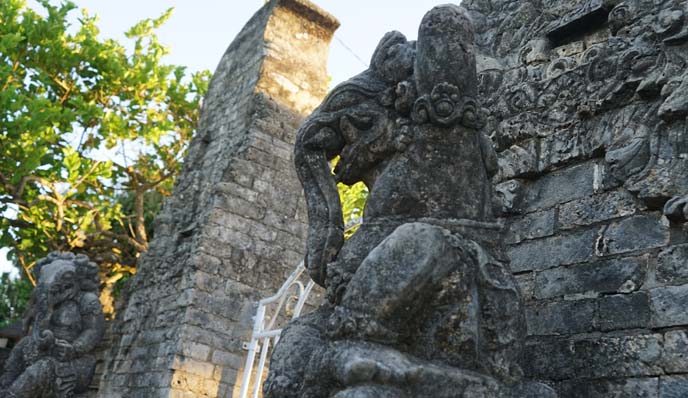
On another evening, Destination Services took us to the famous Uluwatu Temple, which dates back to the 11th century.

At the parking lot, we spotted several long-tailed macaques! These monkeys are seen all over Bali, and the trouble-makers tend to be at Uluwatu. Our guide warned us to secure our sunglasses and belongings, since these monkeys are notorious thieves.

You can see many of these creatures in the Sacred Ubud Monkey Forest.

Pura Luhur Uluwatu is one of Bali’s nine directional temples, which protect the island from evil spirits. Down below, we saw the rolling waves that make Uluwatu beach a hit with surfers.

Talk about a dramatic location. The tiered-roof temple stands at the end of the cliff, 70 metres above the Indian ocean.

We arrived right before sunset, and spent about 30 minutes walking through the accessible grounds of Uluwatu Temple. (Other areas are closed off from visitors). Wear good shoes, as you’ll have to climb about 100 stone-cut steps.

These swirling stone friezes caught my eye.

To respect the sacred ground, both men and women wrap sarongs around their waist, covering their legs.

Sunset over the ocean, with the temple silhouetted in the back… a postcard-perfect view.

Time to gather in an open arena to watch the kecek dance. This performance takes place as the sun sets, around a central flame that casts dramatic shadows.

The male performers wear this traditional wrap garment, and red flowers tucked into their ears. Kecek is a combination of dance, chanting and theater that tells the story of the Hindu epic, “Ramayana.”

The chorus of males ranged in age, from pre-teen to senior. They chanted the story Prince Rama, who with the help of a monkey-like being, defeats King Ravana to rescue the kidnapped Princess Sita.

These men chanted “jack-a-jack-a-jack” while sitting in a circle facing the flames, and waved their arms in trance-like patterns. Some voices rose high above the crowd, keeping the rhythm in a higher pitch. A leader yelled out “Jack” and “Deen” to change the volume, tone and sequences of the chorus.

This man anointed the chanters. Meanwhile, actors in masks roamed and spun around the group.

I couldn’t take my eyes off the female dancers, who were able to bend their fingers in the most expressive ways.

It’s hard to know exactly what the kecek fire dance is like until you see and hear it. I filmed parts of it, which you can watch here on VideoFy Me.

My friends and I also got to watch a Barong performance. This features the live music of the gamelan, an Indonesian ensemble of percussion instruments like the gong and xylophone.
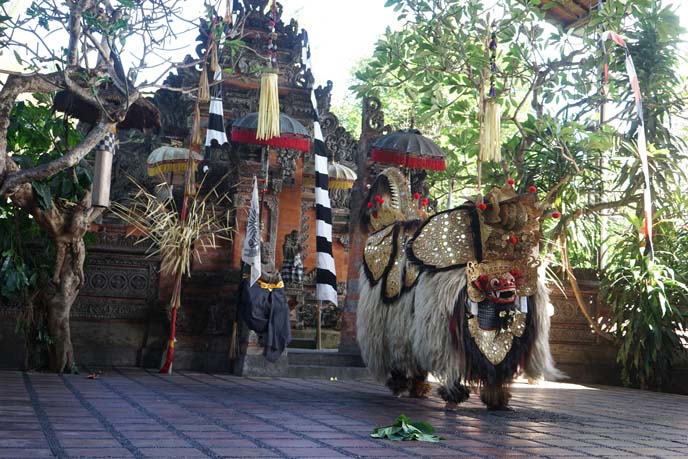
The Barong is a good, lion-like creature in Balinese mythology. It was incredible to watch the actors clack his jaws and shuffle his feet.
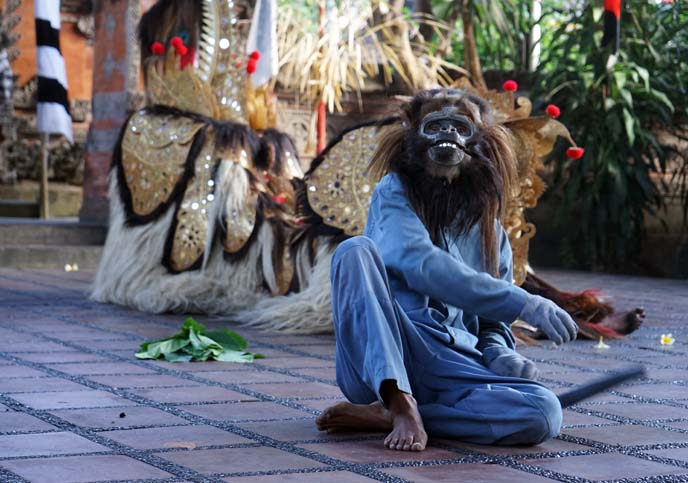
The story features his cheeky monkey friend, and their battles with the demon queen Rangda.
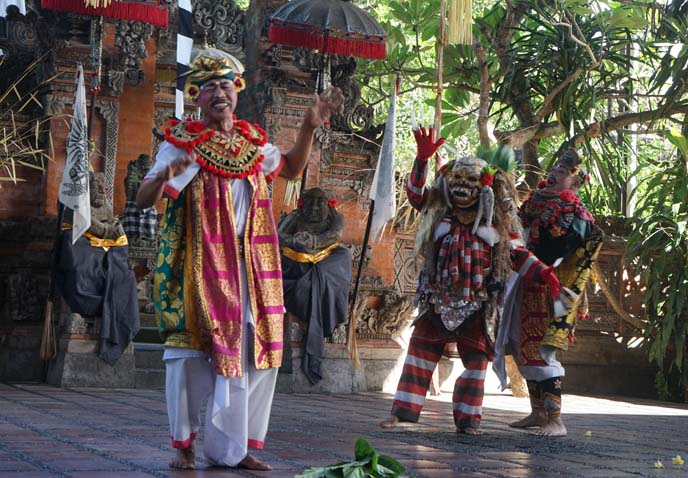
It’s a rather complex plot: Dewi Kunti is supposed to sacrifice Sahadewa to the Rangda, but mischief ensues and in the end, goodness prevails.
You can see highlights of both Indonesian dances in my video above and on VideoFyMe

The monkey in the barong theater moves exactly like this cheeky fellow, who ripped the antenna off a taxi!
Thanks to Cohica Travel for the photography and company in these adventures, and to Destination Services for this bespoke tour.

Moments like this — the sun setting over Uluwatu — are what make travel such a joy. Thanks for letting me share these stories with you.
PS: please be patient, as I write up my recent adventures in Spain, Portugal, Morocco, Hong Kong and Vietnam… They’ll be up soon, I promise!
SHARE & COMMENT

 LA CARMINA
LA CARMINA







25 Comments
Beautiful country.
Agreeeeee
I heart Bali too!!!
<3 <3
It was a pleasure to have you with us in #Bali. We are delighted you enjoyed your tour! Thank you for sharing your #RCMemories
thanks for having us!
ice cream weather for sure…and the bearded man? Any idea who that is?
食べたいいいいいいいいい。。。 あなたはじゃない 食べ物だけね^^
今日のお酒もいいお酒!
hopefully you will get a chance to visit again soon @lacarmina have fun exploring the city *H
I want to come back!
Have a great weekend :)
Thanks!
Hope to meet you!
How Ravishing!! <3
A very beautiful place to visit! Where would you want to go next???
Wow…
Yeahhh
magical BALI.
Magic to the max.
Saw this show in Bali, its great.
sweet outfit of the day. merlyn
your latest Bali post has some great photos – I’m surprised how well your outfit works and compliments the surroundings.
Peace.
Beautiful